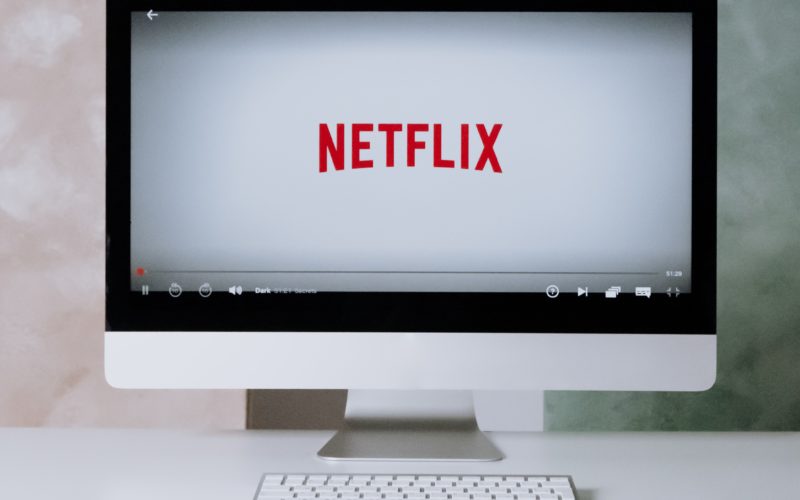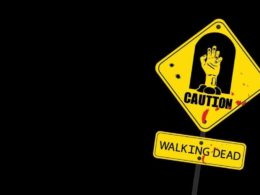Content Warning: This article contains information about suicide and self-harm.
As of 2021, Netflix boasts 209 million subscribers.1[1]Alex Weprin, Netflix Adds 1.5 Million Total Subscribers, But Loses Ground in U.S./Canada, THE HOLLYWOOD REPORTER (July 20, 2021), https://www.hollywoodreporter.com/business/digital/netflix-q2-2021-earnings-1234985080/. Netflix caters to a wide range of viewers through its original programming and added content. Indeed, Netflix publicly highlighted the importance of appealing to its Generation-Z (“Gen-Z”) audience, which comprises people born between 1996 and 2010.2[2]Judy Berman, Netflix’s Latest Numbers Show It Has One Demographic in Mind, TIME (Jan. 24, 2019), https://time.com/5509649/netflix-teens-gen-z/. In a survey of nearly 8,500 Gen-Z individuals, Netflix was their fourth favorite brand overall, while no cable television network landed in the top 100 brands.3[3]Id. Today’s young adults have clear brand recognition and loyalty toward their preferred streaming service. In 2015, Netflix began production on a series adaptation of the2007 young adult novel, 13 Reasons Why, originally written by Jay Asher. The novel was a #1 New York Times best-selling young adult novel and has retained its popularity with teenagers since its release.4[4]Motoko Rich, A Story of a Teenager’s Suicide Quietly Becomes a Best Seller, THE NEW YORK TIMES (Mar. 9, 2009), https://www.nytimes.com/2009/03/10/books/10why.html.
The show follows Clay Jensen, a teenage boy who finds himself in possession of a box of cassette tapes.5[5]Jay Asher, Synopsis, THIRTEEN REASONS WHY, http://www.thirteenreasonswhy.com/thirteenreasonswhy.html. The tapes contain thirteen reasons why his classmate, Hannah Baker, decided to commit suicide. The book became the third-most-banned or challenged book in U.S. schools between 2010 and 2019.6[6]Top 100 Most Banned and Challenged Books: 2010-2019, AMERICAN LIBRARY ASSOCIATION (2020), https://www.ala.org/advocacy/bbooks/frequentlychallengedbooks/decade2019/. The series premiered on Netflix in 2017 and proved to be as controversial as the book, as many parents and educators grew outraged by the show’s graphic depictions of sexual assault and suicide.7[7]Sophie Gilbert, What Went Wrong With 13 Reasons Why?, THE ATLANTIC (May 4, 2017), https://www.theatlantic.com/entertainment/archive/2017/05/13-reasons-why-controversy/525237/. Some critics of the show claimed that it glamorized suicide and would inspire copycat incidents by young adults.8[8]Id. A month after the show’s release, Netflix added content warnings to the beginning of each episode, but was it too little, too late?9[9]Travis Andrews, Netflix’s ‘13 Reasons Why’ gets more trigger warnings. Critics say it glamorizes teen suicide, THE WASHINGTON POST (May 2, 2017), https://www.washingtonpost.com/news/morning-mix/wp/2017/05/02/netflixs-13-reasons-why-gets-more-trigger-warnings-critics-say-it-glamorizes-teen-suicide/.
Four years after the show’s release, Netflix was named as a defendant in a class-action lawsuit filed by parents who lost their children to suicide.10[10]Lauren Berg, Netflix’s ‘13 Reasons Why’ Accused Of Spiking Child Suicides, LAW360 (Aug. 26, 2021), https://www.law360.com/media/articles/1416431/netflix-s-13-reasons-why-accused-of-spiking-child-suicides. The lawsuit was initiated by John Herndon, whose daughter committed suicide shortly after watching the series.11[11]Complaint at 8, The Estate of Isabella “Bella” Herndon et al. v. Netflix Inc., (N.D. Cal. 2021) (5:21-cv-06561), https://www.classaction.org/media/the-estate-of-bh-et-al-v-netflix-inc-compressed.pdf. In the action against Netflix, Herndon represents the class of surviving family members of over one thousand children who committed suicide since the release of 13 Reasons Why.12[12]Berg, supra note 10. The plaintiffs contend that Netflix failed to adequately warn viewers that watching the show could cause suicide or suicidal thoughts.13[13]Complaint at 32. The plaintiffs also claim that Netflix specifically targeted vulnerable children using individualized data collected by the streaming service, despite receiving warnings by its hired suicide-prevention experts and psychologists about the high likelihood of copycat suicide attempts.14[14]Id. at 58. Researchers determined that child suicide rates rose 28.9% in April 2017.15[15]Id. at 6. Despite such data, experts disagree whether the show caused the increase in suicide rates. Dr. Rebecca Hedrick, a child and adolescent psychiatry specialist who advised the show-runners, claims that the show had a positive impact on young adults, including informing them about suicide, but did not cause an increase in their suicidal thoughts or behavior.16[16]Lesley Goldberg, Netflix Alters Graphic ‘13 Reasons Why’ Suicide Scene After Controversy, THE HOLLYWOOD REPORTER (July 15, 2019), https://www.hollywoodreporter.com/tv/tv-news/netflix-alters-graphic-13-reasons-why-suicide-scene-controversy-1224489/.
“Failure to warn” is a cause of action often brought in product liability cases. Here, the plaintiffs refer to 13 Reasons Why as Netflix’s product.17[17]Complaint at 74, The Estate of Isabella “Bella” Herndon et al. v. Netflix Inc., (N.D. Cal. 2021) (5:21-cv-06561), https://www.classaction.org/media/the-estate-of-bh-et-al-v-netflix-inc-compressed.pdf. For a warning to be necessary in a product liability case, Netflix must owe a duty of care to its audience and know or should know that its product is dangerous to consumers.18[18]Aaron Gershonowitz, The Strict Liability Duty To Warn, 44 Wash. & Lee L. Rev. 71, 74 (1987), https://scholarlycommons.law.wlu.edu/wlulr/vol44/iss1/6. In order for the plaintiffs’ cause of action to be viable, they must also prove that the failure to warn caused the injury they are claiming.19[19]Complaint at 8. The plaintiffs allege that before the show’s release, Dr. Dan Reidenberg, the executive director of a nonprofit suicide-prevention organization, expressed concern to Netflix that the series would cause children to commit suicide and advised against its release.20[20]Id. at 27. Dr. Reidenberg claims that Netflix said that stopping the release “wasn’t an option.”21[21]Id. If true, Netflix was aware of the possible dangers the series posed to young adults and chose to release it anyway. The question remains, however, if Netflix had a duty to warn its audience of potential dangers. The plaintiffs claim that a reasonable audience would not be aware of the health risks the show poses, making it Netflix’s responsibility to warn viewers of such risks.22[22]Id. at 36.
The Federal Communications Commission (“FCC”) regulates television communications in the United States.23[23]About the FCC, FEDERAL COMMUNICATIONS COMMISSION, https://www.fcc.gov/about/overview. At the request of Congress and the FCC through the Telecommunications Act of 1996, major entertainment industry members, including the Motion Picture Association of America, the National Cable Television Association, and the National Association of Broadcasters, created a voluntary ratings system to be used by content producers at their option.24[24]Letter from Jack Valenti, Decker Anstrom, and Eddie Fritts, to The Federal Communications Commission, (Jan. 17, 1997) (On file with The Federal Communications Commission), https://transition.fcc.gov/Bureaus/Cable/Public_Notices/1997/fc97034a.pdf. The television program ratings used today include TV-Y, TV-Y7, TV-G, TV-PG, TV-14, and TV-MA, which indicate whether the material is not suitable for children depending on age.25[25]Obscenity, Indecency & Profanity – TV Ratings & Channel Blocking, FEDERAL COMMUNICATIONS COMMISSION, https://www.fcc.gov/general/obscenity-indecency-profanity-tv-ratings-channel-blocking.
Streaming services such as Netflix and Hulu, however, are not subject to FCC regulation, as then-FCC Commissioner Michael O’Rielly announced in 2018. Consequently, Netflix has discretion over whether and how to assign content and age warnings. Netflix nonetheless voluntarily rates its programs, and has given 13 Reasons Why a TV-MA rating.26[26]Michael O’Rielly, FCC Regulatory Free Arena, FEDERAL COMMUNICATIONS COMMISSION (June 1, 2018), https://www.fcc.gov/news-events/blog/2018/06/01/fcc-regulatory-free-arena. Without FCC regulation, the question remains whether Netflix had a duty to warn its viewers beyond optional rating disclosures. It might be argued that those disclosures amounted to a voluntary undertaking to protect viewers, and could provide a basis for tort liability.27[27]Colonial Sav. Association v. Taylor, 544 S.W.2d 116, 119 (Tex. 1976) Pending litigation of this issue, and in response to public criticism regarding the show’s subject matter, Netflix removed the scene of Hannah’s graphic suicide in July 2019, over two years after the show first aired.28[28]Alex Marshall, Netflix Deletes 13 Reasons Why Suicide Scene, THE NEW YORK TIMES (July 16, 2019), https://www.nytimes.com/2019/07/16/arts/television/netflix-deleted-13-reasons-why-suicide-scene.html.
Written by: Rachel Conte
Rachel is a 2023 J.D. Candidate at Brooklyn Law School
1 Alex Weprin, Netflix Adds 1.5 Million Total Subscribers, But Loses Ground in U.S./Canada, The Hollywood Reporter (July 20, 2021), https://www.hollywoodreporter.com/business/digital/netflix-q2-2021-earnings-1234985080/.
2 Judy Berman, Netflix’s Latest Numbers Show It Has One Demographic in Mind, TIME (Jan. 24, 2019), https://time.com/5509649/netflix-teens-gen-z/.
3 Id.
4 Motoko Rich, A Story of a Teenager’s Suicide Quietly Becomes a Best Seller, The New York Times (Mar. 9, 2009), https://www.nytimes.com/2009/03/10/books/10why.html.
5 Jay Asher, Synopsis, Thirteen Reasons Why, http://www.thirteenreasonswhy.com/thirteenreasonswhy.html.
6 Top 100 Most Banned and Challenged Books: 2010-2019, American Library Association (2020), https://www.ala.org/advocacy/bbooks/frequentlychallengedbooks/decade2019/.
7 Sophie Gilbert, What Went Wrong With 13 Reasons Why?, The Atlantic (May 4, 2017), https://www.theatlantic.com/entertainment/archive/2017/05/13-reasons-why-controversy/525237/.
8 Id.
9 Travis Andrews, Netflix’s ‘13 Reasons Why’ gets more trigger warnings. Critics say it glamorizes teen suicide,The Washington Post(May 2, 2017), https://www.washingtonpost.com/news/morning-mix/wp/2017/05/02/netflixs-13-reasons-why-gets-more-trigger-warnings-critics-say-it-glamorizes-teen-suicide/.
10 Lauren Berg, Netflix’s ‘13 Reasons Why’ Accused Of Spiking Child Suicides, Law360 (Aug. 26, 2021), https://www.law360.com/media/articles/1416431/netflix-s-13-reasons-why-accused-of-spiking-child-suicides.
11 Complaint at 8, The Estate of Isabella “Bella” Herndon et al. v. Netflix Inc., (N.D. Cal. 2021) (5:21-cv-06561), https://www.classaction.org/media/the-estate-of-bh-et-al-v-netflix-inc-compressed.pdf
12 Berg, supra note 10.
13 Complaint at 32.
14 Id. at 58.
15 Id. at 6.
16 Lesley Goldberg, Netflix Alters Graphic ‘13 Reasons Why’ Suicide Scene After Controversy, The Hollywood Reporter (July 15, 2019), https://www.hollywoodreporter.com/tv/tv-news/netflix-alters-graphic-13-reasons-why-suicide-scene-controversy-1224489/.
17 Complaint at 74, The Estate of Isabella “Bella” Herndon et al. v. Netflix Inc. (N.D. Cal. 2021) (5:21-cv-06561), https://www.classaction.org/media/the-estate-of-bh-et-al-v-netflix-inc-compressed.pdf
18 Aaron Gershonowitz, The Strict Liability Duty To Warn, 44 Wash. & Lee L. Rev. 71, 74 (1987), https://scholarlycommons.law.wlu.edu/wlulr/vol44/iss1/6.
19 Complaint at 8.
20 Id. at 27.
21 Id.
22 Id. at 36.
23 About the FCC, Federal Communications Commission, https://www.fcc.gov/about/overview.
24 Letter from Jack Valenti, Decker Anstrom, and Eddie Fritts, to The Federal Communications Commission, (Jan. 17, 1997) (On file with The Federal Communications Commission), https://transition.fcc.gov/Bureaus/Cable/Public_Notices/1997/fc97034a.pdf.
25 Obscenity, Indecency & Profanity – TV Ratings & Channel Blocking, Federal Communications Commission, https://www.fcc.gov/general/obscenity-indecency-profanity-tv-ratings-channel-blocking.
26 Michael O’Rielly, FCC Regulatory Free Arena, Federal Communications Commission (June 1, 2018), https://www.fcc.gov/news-events/blog/2018/06/01/fcc-regulatory-free-arena.
27 Colonial Sav. Association v. Taylor, 544 S.W.2d 116, 119 (Tex. 1976)
28 Alex Marshall, Netflix Deletes 13 Reasons Why Suicide Scene, The New York Times (July 16, 2019),https://www.nytimes.com/2019/07/16/arts/television/netflix-deleted-13-reasons-why-suicide-scene.html.




